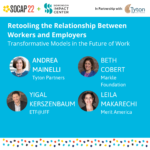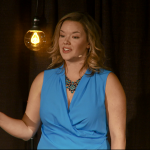Question: How can I move my company beyond rhetoric and into concrete action to improve our workplace’s diversity and inclusion? We have employee resource groups and unconscious bias training, but I’m not sure that’s enough.
Answer: If you read George Orwell’s Animal Farm, you’re familiar with the line that goes, “All animals are equal, but some are more equal than others.” That phrase summarizes the somber reality of many diversity initiatives.
In theory, all employees are treated equitably. But in practice, some employees are treated more equitably than others.
Let’s turn our attention to black women in the workforce. They earn 39% less than white men and over the course of a lifetime, that adds up to over $950,000 in lost wages. Nearly a million dollars. That’s a lot of money to miss out on, and yet, more than one in three Americans does not know that such a pay gap exists. Even though the consequences of this pay gap are not hard to find. I’ll point some out:
- Upon retirement age, black women have approximately $30,000 saved in defined contribution accounts, whereas white women have approximately $60,000 saved.
- Black mothers are more than three times as likely to die from pregnancy complications than white mothers.
- More than 45% of black single mothers live in poverty compared to 32% of white single mothers.
- Since 2000, the rate of homeownership for black Americans has not risen above 50%, whereas the rate of homeownership for white Americans has not dropped below 70%.
I’m showing you these stats because I want you to understand how systemic inequities work. When black women are paid 61 cents for every one dollar white men are paid, it signals that they are not valued equitably in the workplace. When black women are not valued equitably in the workplace, they have less access to opportunities and less ability to invest in their wellbeing.
It’s a deplorable cycle built into a broken system.
So if you want DI&E initiatives to have a tangible, concrete impact in your workplace, you should start by asking:
“Is our workplace built to value all employees equitably?”
Pay data is one way to answer this question. But it’s not the only way. You also need to know:
- Is there equitable representation at every step of our corporate ladder, from entry-level to C-suite? (Currently, there’s not one black woman among all the Fortune 500 CEOs.)
- Are there equitable rates of promotion throughout our talent pipeline? (Across the US, only 58 black women are promoted from an entry-level to manager position for every 100 men promoted.)
- Is employee performance evaluated in a fair and objective manner, one that removes unconscious bias from reviews? (On average, women receive lower ratings than men 4% of the time for similar performance.)
- Are employees given access to the same training, resources, and opportunities for advancement? (Only 19% of black women have received job or executive leadership training in their career compared to 30% of white women and 33% of white men.)
These questions will reveal the type of system your human capital management is operating on. Is it truly a system that values all employees equitably?
Remember, you can hire for diversity; you must build for inclusion.
Use these questions to determine what structural changes need to take place to build a workplace that values all employees equitably.
This article was originally published here.
Interested in having these Q&A roundups delivered directly to you? Join the Brave Souls® community (all you need is an email address).






